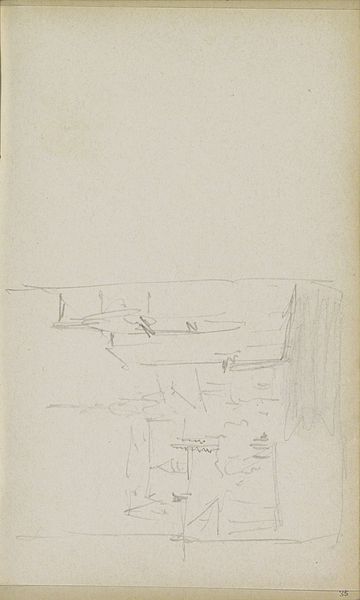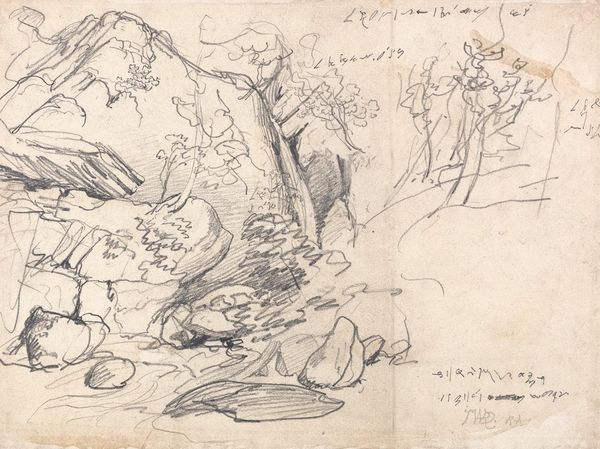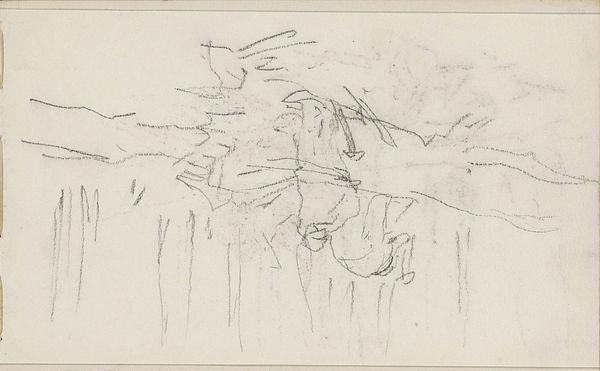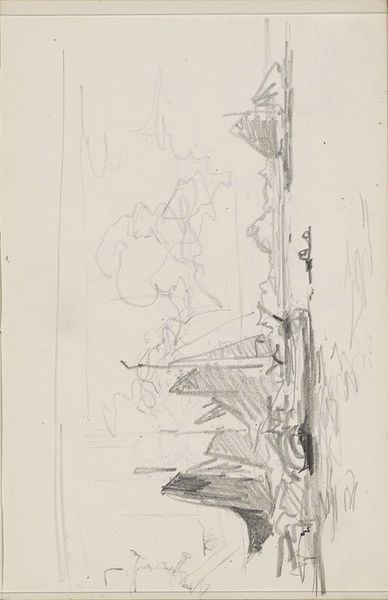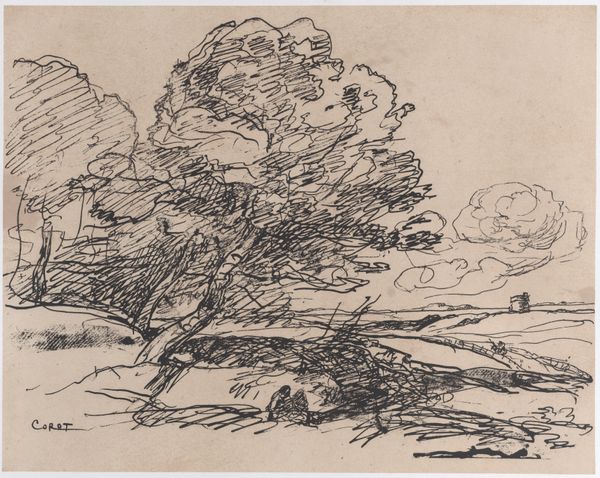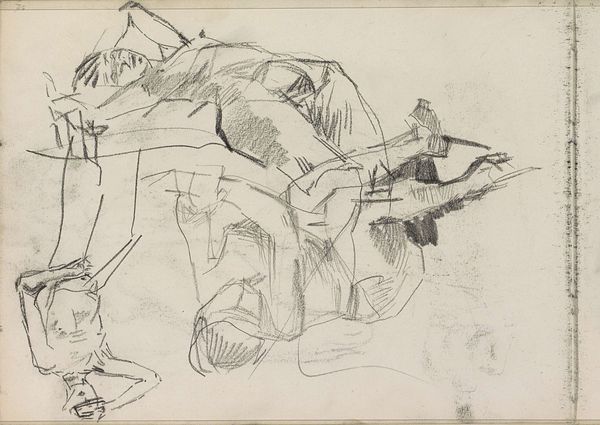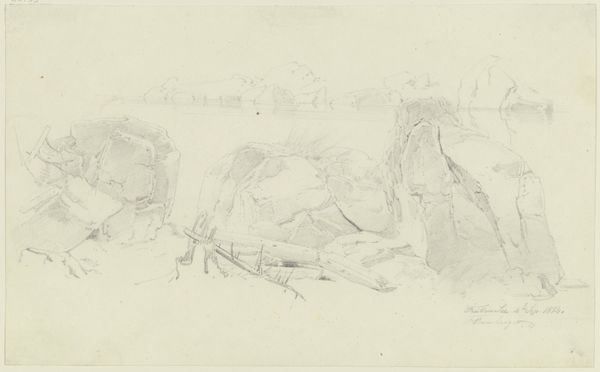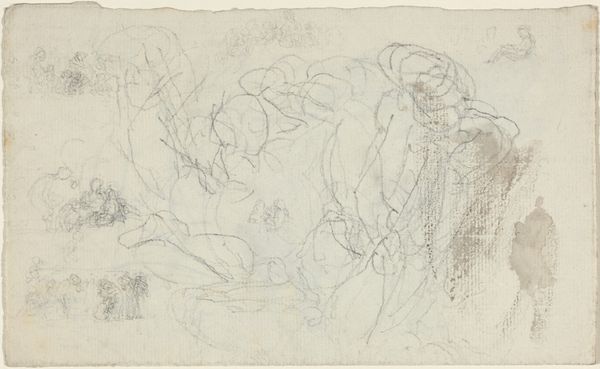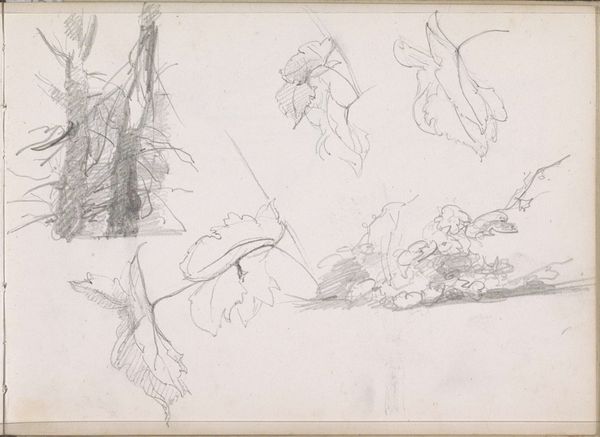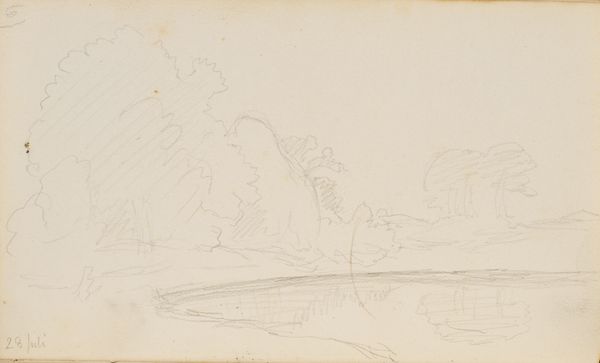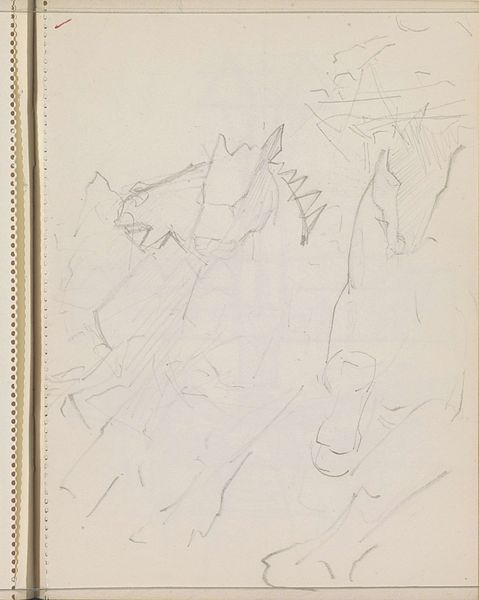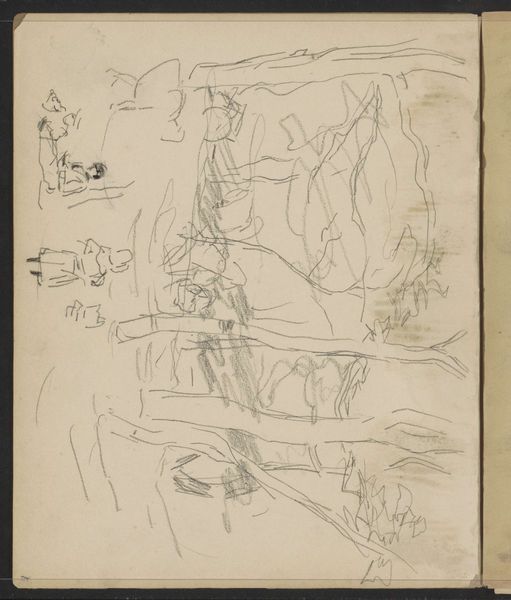
Dimensions: overall: 34.7 x 25.6 cm (13 11/16 x 10 1/16 in.)
Copyright: National Gallery of Art: CC0 1.0
Edward Lear made this drawing of a ruined temple on a hill in 1864 using brown ink on paper. The sepia ink lends itself well to a scene of classical antiquity, evoking the warmth of the Mediterranean sun and the earth tones of ancient ruins. Look closely, and you will see the layering of marks that build up the scene. Short, hatched lines create areas of shadow, while longer, more fluid strokes define the contours of the landscape and the architectural fragments. This choice of rapid strokes suggests immediacy, as if capturing a fleeting moment during his travels. Lear’s draftsmanship is a reminder that even seemingly simple sketches are the result of skilled practice and observation. By focusing on the immediacy of the mark, we can see how the artist gives form to a ruin and a landscape through the economy of his materials. This approach reminds us that drawing itself is a form of making, one that bridges the gap between the artist’s vision and the world around them.
Comments
No comments
Be the first to comment and join the conversation on the ultimate creative platform.
